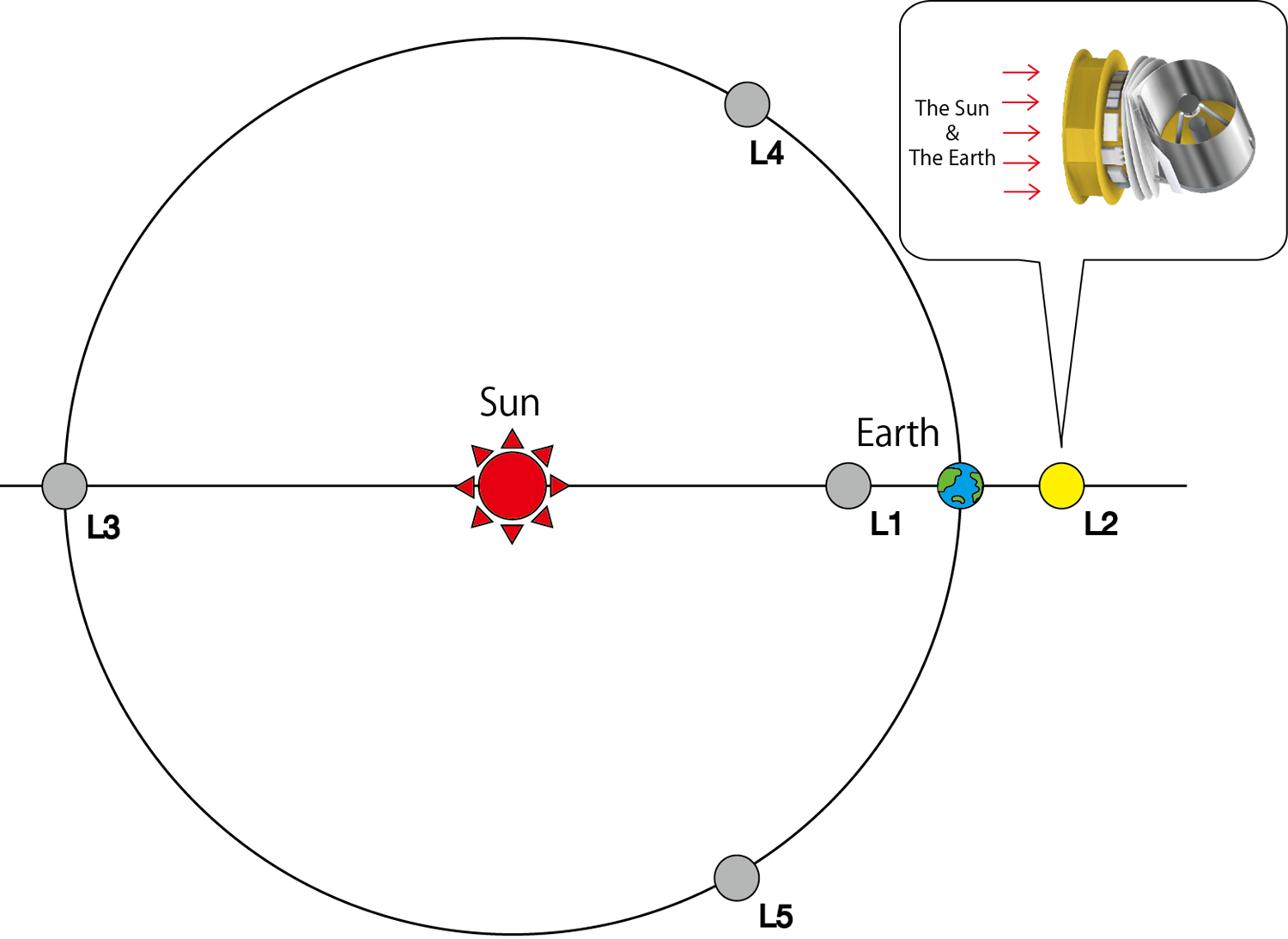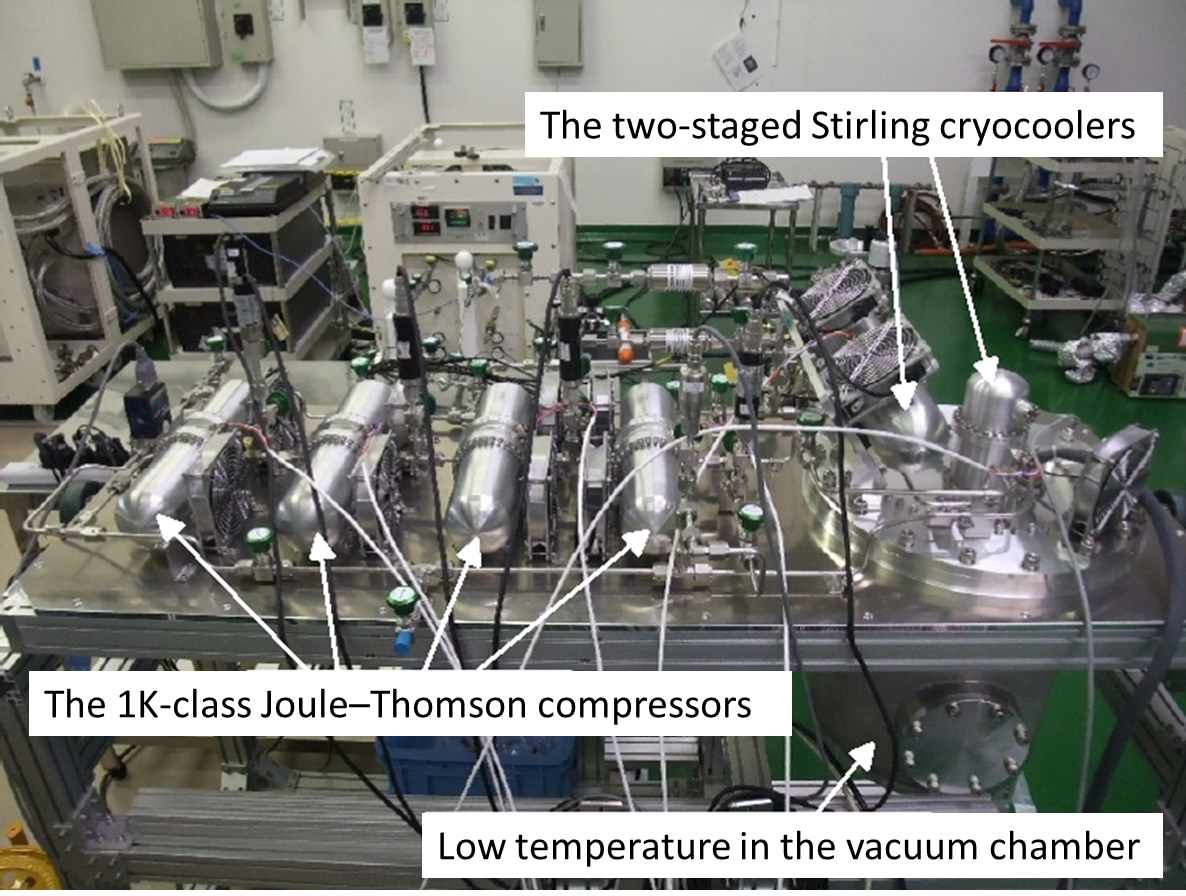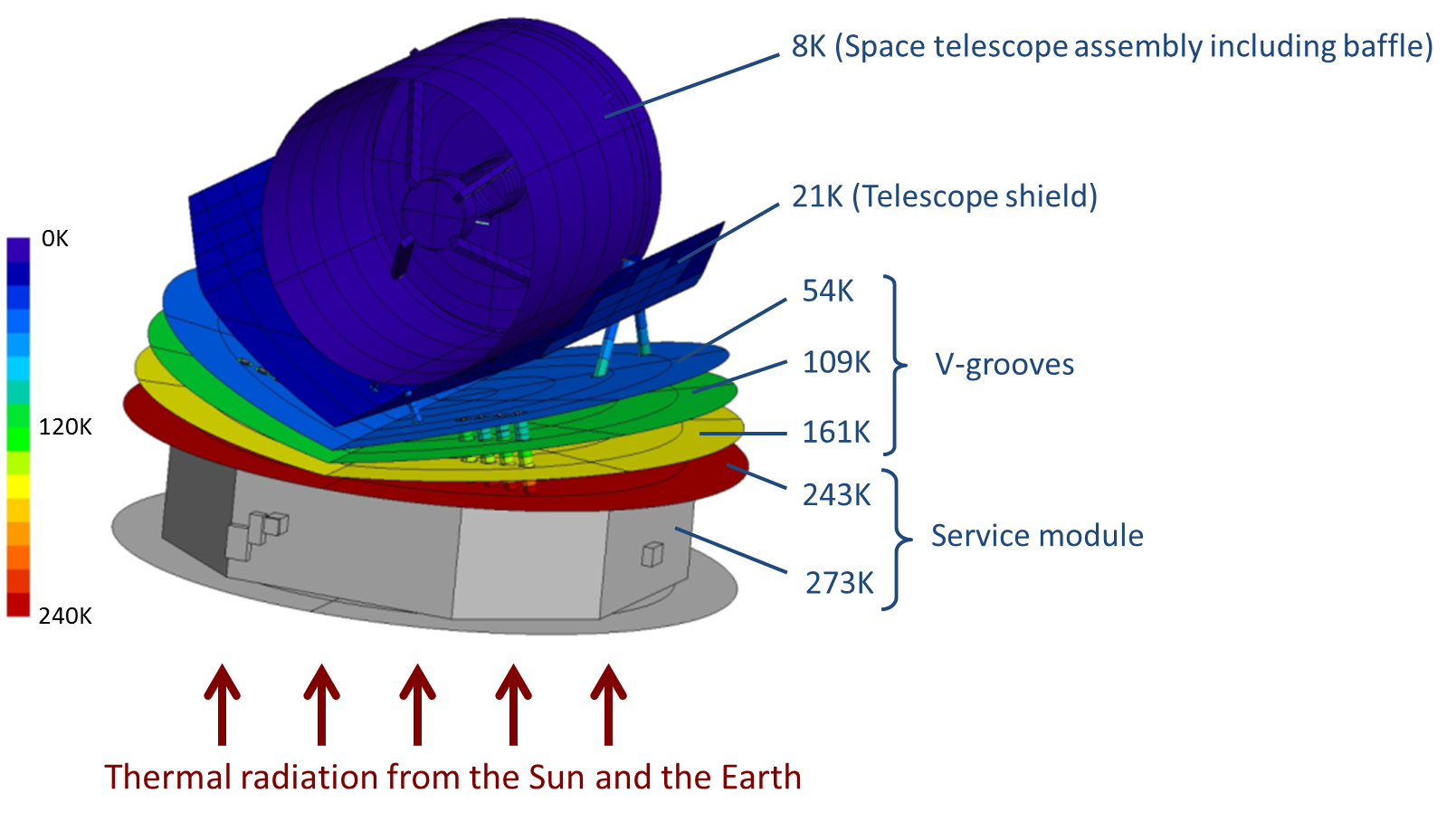The Next-Generation Infrared Astronomy Mission


Cryogenic Technology of SPICA
How to Cool SPICA
Home > Cryogenic Technology of SPICA
-265 ℃, What a Cool Telescope !
Because every object emits infrared radiation at a wavelength corresponding to its temperature, infrared emission from the telescope itself can be a serious hindrance to high sensitivity observations. To overcome this issue, SPICA will cool its entire telescope to -265 ℃ (8 K) with a sophisticated cryogenic technology, which enables unprecedented sensitivity in the mid-to-far infrared wavelength range. Being capable of making observations of more distant galaxies with this cool telescope, SPICA is expected to reveal a completely new side of the Universe.

Fig. 1 Comparison of pictures taken in visible (left) and infrared (right) bands. The right hand warmed with hot water looks bright, while the left hand cooled with iced water looks dark in the infrared picture; warmer objects emit stronger infrared radiation than cooler objects.
Observation from the L2 point
To keep a telescope cool, it is necessary to reduce heat influx from both the Earth and the Sun to the maximum extent. To perform high sensitivity infrared observations without being affected by the atmosphere of the Earth, observing from space is absolutely necessary.
From these considerations, SPICA opts for a halo orbit around the second Lagrangian point (L2) <*1> of the Sun-Earth system as its observation point. At the L2 point, 150 million km away from the Earth, the heat flux from the Earth is relatively small. Additionally, at the L2 point, it is possible to simultaneously insulate the spacecraft from both the Earth and the Sun, because at the L2 point the Sun and the Earth are in almost the same direction.
SPICA will be the first Japanese space observatory to be launched into the L2 point. The launcher is planed to be the H3 Launch Vehicle, the next flagship rocket of JAXA, which is capable of carrying this huge observatory out to the L2 point.
*1: the Lagrangian points: At these points, the gravity from the Sun and Earth are balanced with the centrifugal force of the orbiting satellite.

Fig. 2 Schematic view of the Lagrangian points (L1-L5) of the Sun-Earth system. SPICA is to be launched into the L2, which is located 150 million km away from the Earth on the opposite side from the Sun.
Mechanical Cryocoolers; the Japanese Innovative Technology
Liquid helium has been commonly used as a cryogenic refrigerant for telescopes and instruments onboard scientific satellites. To carry liquid helium into space requires a large tank, which makes satellites larger and heavier, and hence restricts their telescope size. Moreover, cryogenic duration is limited by the mount of liquid helium.
To eliminate these obstacles, SPICA will employ innovative mechanical cryocoolers, instead of conventional liquid-helium. This allows SPICA to realize a 2.5 m large aperture telescope with an optical throughput 10 times higher, and a designed life time (3 years) longer than those of AKARI.
The SPICA cryogenic system adopts two kinds of Joule-Thomson refrigerators (the 1K and 4K classes) with a world-best cooling power. These mechanical coolers are developed by the Research and Development Directorate of JAXA. The same types of coolers were adopted by the X-ray observatory Hitomi (previously known as ASTRO-H), and are to be onboard the cosmic background radiation observatory, LiteBIRD. This mechanical cooler technology is a key technology for successful space satellites.

Fig. 3 The 1K-class Joule-Thomson refrigerator developed by JAXA
(Sato et al 2015),
coupled with a two-stage Stirling cryocooler for precooling.
V-groove Thermal Shields
To cool the entire telescope, it is also important to block heat form the sun and instruments onboard, in addition to direct cooling. Hence, as a strategy for heat insulation, SPICA will adopt V-groove thermal shields<*2>, which were used in Plank observatory developed by ESA.
The V-groove thermal shields are sunshades bent in a V-shape. In the configuration of SPICA, triple-layer V-groove thermal shields will be arranged between the service module and the telescope (see Fig. 4) to enable effective insulation by letting heat from the sun, the earth and the service module into space. Being closer to the telescope, the temperatures of the shields will be lower. This mechanism allows the telescope and the focal plan instruments to be cooled to cryogenic temperatures.
<*2> See information on the Planck thermal design at the Planck web

Fig. 4 Structural-thermal design of SPICA currently under study. The triple-layer V-groove thermal shields protect the telescope from thermal conduction from the sun, the earth and the service module. (Based on the study report of Next Generation-Cryogenic cooled Infrared Telescope compiled by the ESA's Concurrent Design Facility (CDF))